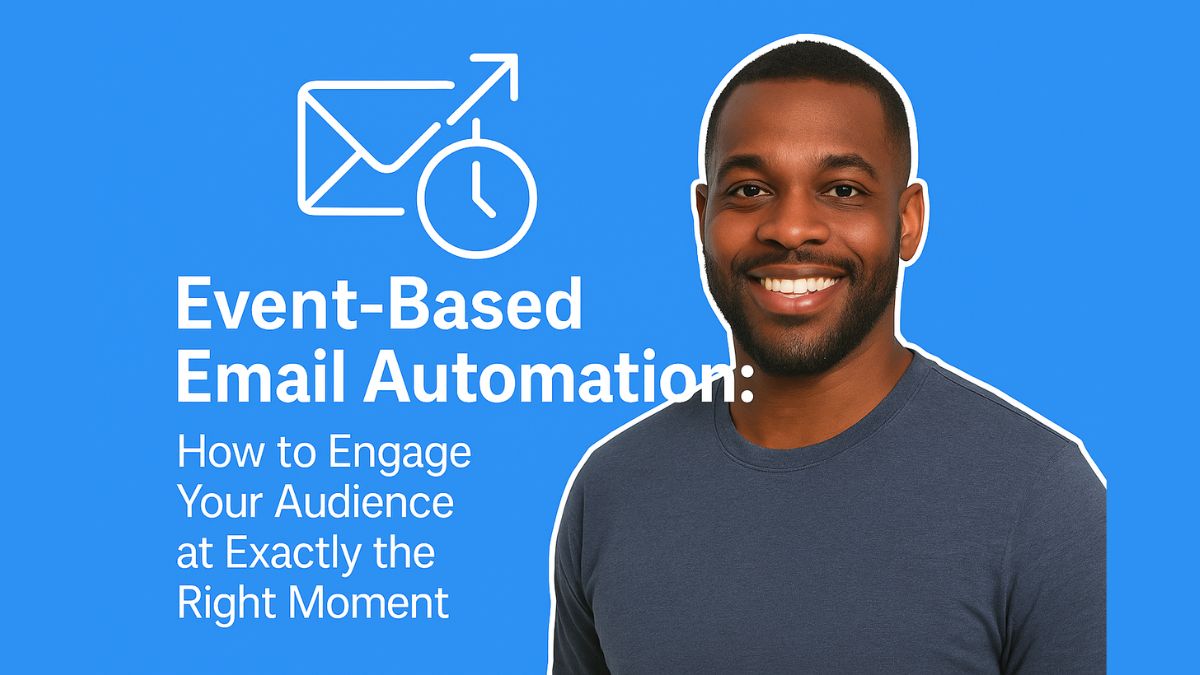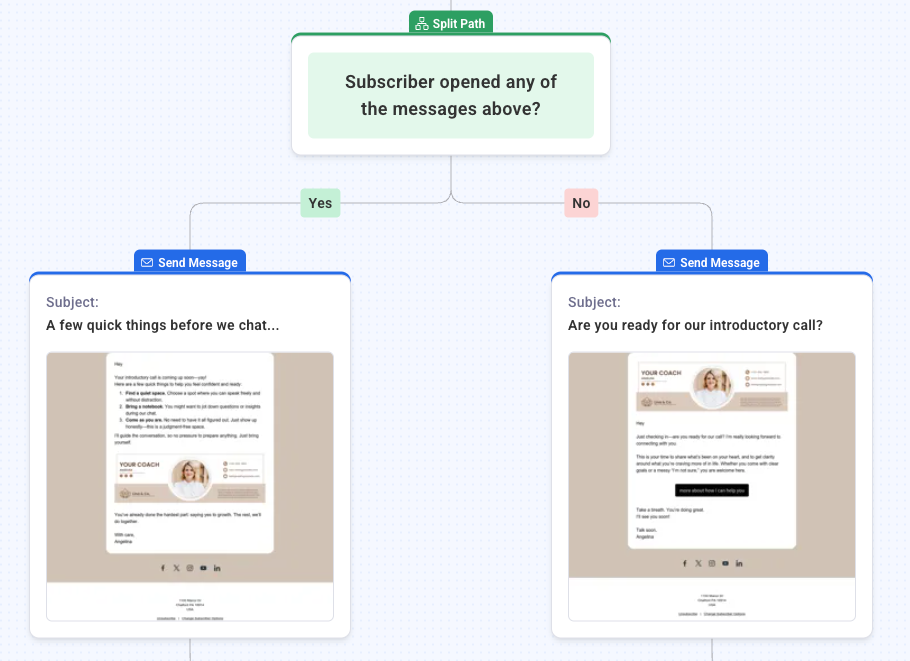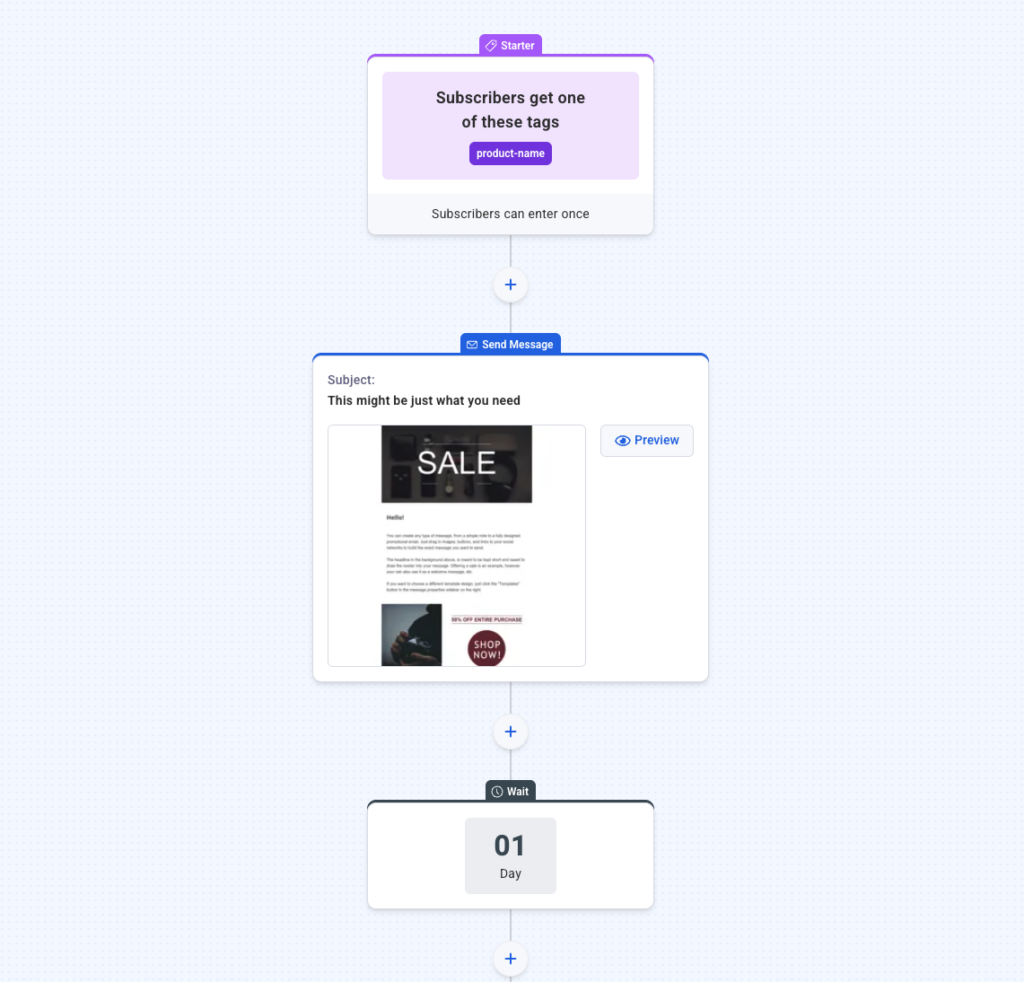
Every time someone clicks away from your store, chances are high you’ll never see them again—unless you act in seconds. Event-based email automation flips the script, sending tailored messages the instant a subscriber takes action (or inaction), so you recover lost sales and keep engagement soaring.
In today’s inbox-crowded world, timing isn’t just everything—it’s the only thing. By aligning your campaigns with real user behaviors—like browsing products, downloading resources, or leaving items in a cart—you’ll deliver the right message to the right person at precisely the moment they’re most receptive. No more generic blasts. No more missed opportunities.
In this guide, you’ll discover exactly how event-based email automation works, why it outperforms traditional campaigns, and how to set up your first high-impact trigger—so your emails practically sell themselves.
What Is Event-Based Email Automation?
Event-based email automation is a marketing technique where emails are sent based on specific actions (or events) your subscribers take. Instead of broadcasting the same message to everyone at a set time, you create automated emails that respond to individual behavior. For example:
- Welcoming new subscribers the moment they join your list
- Sending a special discount when someone abandons their shopping cart
- Following up after a customer makes a purchase
- Reminding users about an upcoming event or webinar they registered for
By utilizing AWeber’s Workflow automations with conditional branching, you can further personalize these responses, creating unique subscriber journeys based on their interactions, demographics, or previous engagement.

How Does Event-Based Email Automation Work?
Successful event-based email automation requires three essential components:
- An event trigger: The specific subscriber action you want to respond to (like signing up, purchasing, or clicking a link).
- A segmented list: Groups in your email list that help your automation tool identify who qualifies for each event.
- Automated workflow: The sequence of emails and rules you set up to deliver the right message after a trigger.
AWeber’s Workflow automations provide an intuitive visual builder layout, making the process straightforward. With auto-save functionality, you can safely tweak workflows anytime, ensuring your updates won’t go live until you're ready.

Example Automation: Welcome Email Series
How to set it up: Create an automation that triggers when someone subscribes to your list. Your workflow might include:
- Immediate: Send a personalized welcome message.
- +2 days: Offer helpful resources or your most-read blog post.
- +5 days: Invite them to connect on social or reply to the email with a question.
Why it works: New subscribers receive timely, relevant info while your brand is still fresh in their mind. This builds trust and keeps them engaged from day one.
When to apply: Any time you gain subscribers—whether from a website signup, lead magnet, or promo event.
Key Benefits of Event-Based Email Automation
Event-based email automation isn’t just convenient; it’s essential for building long-term relationships with your audience and maximizing marketing results. Here’s why:
- Personalization at scale: Tailored emails respond to user actions, making each message relevant to the recipient.
- Timely engagement: Automations deliver messages precisely when your subscriber is most interested or ready to act.
- Increased conversion rates: Well-timed emails often outperform generic campaigns in terms of opens, clicks, and sales.
- Saves time and resources: Once set up, your automation continues working 24/7, nurturing leads and customers without manual effort.
- Improved customer experience: Subscribers get helpful, non-intrusive emails that solve their problems or offer value at just the right moment.
For example, if you're an online retailer you can use an event-based workflow to send a gentle reminder to shoppers who left items in their cart. Studies have show, that an abandoned cart reminder can increase completed purchases by 20%. This type of automated campaign has also been shown to yield 6x higher transaction rates than traditional emails.
Popular Event Triggers to Use
To maximize your results, start by identifying which events matter most in your subscriber journey. Here are some high-impact triggers for event-based email automation:
- New subscriber sign-up: Send a warm welcome and provide helpful next steps.
- Abandoned cart: Remind shoppers of left-behind items (and possibly offer a small incentive).
- Product purchase: Deliver order confirmation, onboarding tips, or upsell offers.
- Birthday or anniversary: Reward subscribers with a special treat or exclusive content.
- Download completed: Follow up with additional resources or invitations to engage further.
- Event registration: Send reminders and share important event details before and after the event.
Conditional branching using AWeber's Workflow automations ensures your emails match subscriber interactions, significantly enhancing engagement.
How to Set Up Event-Based Email Automation in Practice
Ready to implement event-based email automation? Here’s a step-by-step process to get you started:
- Identify key subscriber events: Look for actions that represent a meaningful step in your customer journey. Use analytics to determine which behaviors align with engagement or purchase.
- Map your automation workflow: Outline the sequence, timing, and content of each message. Think about what the subscriber needs at each moment.
- Create your content: Write concise, value-driven emails for each step. Personalize as much as possible using the subscriber’s name or past actions.
- Build and test your automation: Use your email tool’s automation builder to set up triggers and emails. Test each workflow thoroughly to ensure timing, content, and links all function as expected.
- Monitor and optimize: Regularly review your analytics. Adjust timing, messaging, or incentives based on open rates, click rates, and conversions.
Here's a step-by-step process for setting up a reengagement automation in AWeber.
Best Practices for Effective Event-Based Automations
- Keep messages focused and relevant: Each email should match the subscriber’s action and provide clear value or next steps.
- Don’t overload your audience: Use thoughtful timing and avoid sending too many emails in quick succession.
- Provide clear calls-to-action (CTAs): Tell your reader exactly what to do next, whether it’s redeem an offer, read a resource, or reply with a question.
- Personalize whenever possible: Even simple details—like using a first name or referencing a specific product—can increase engagement.
- Test and iterate: A/B test your messages, subject lines, timing, and automation paths to see what works best for your audience.
See how these principles played out for an independent course creator: By automating onboarding emails after every sign-up, she reduced unsubscribes by 35% and saw greater participation in her online programs. Her secret was fine-tuning each automation to match subscriber interests, not just basic demographics.
Take the Next Step: Make Your Emails Work Smarter
Event-based email automation using AWeber’s Workflow automation transforms your marketing from manual to personalized, dynamic journeys. Meet subscribers exactly when they’re ready to engage—automatically enhancing relationships and boosting your bottom line.
Boost engagement and conversions effortlessly with automated, personalized emails. Sign up for AWeber and create your first Workflow today.
The post Event-Based Email Automation: How to Engage Your Audience at Exactly the Right Moment appeared first on AWeber.
from AWeber https://ift.tt/SnoKu37
via IFTTT
No comments:
Post a Comment